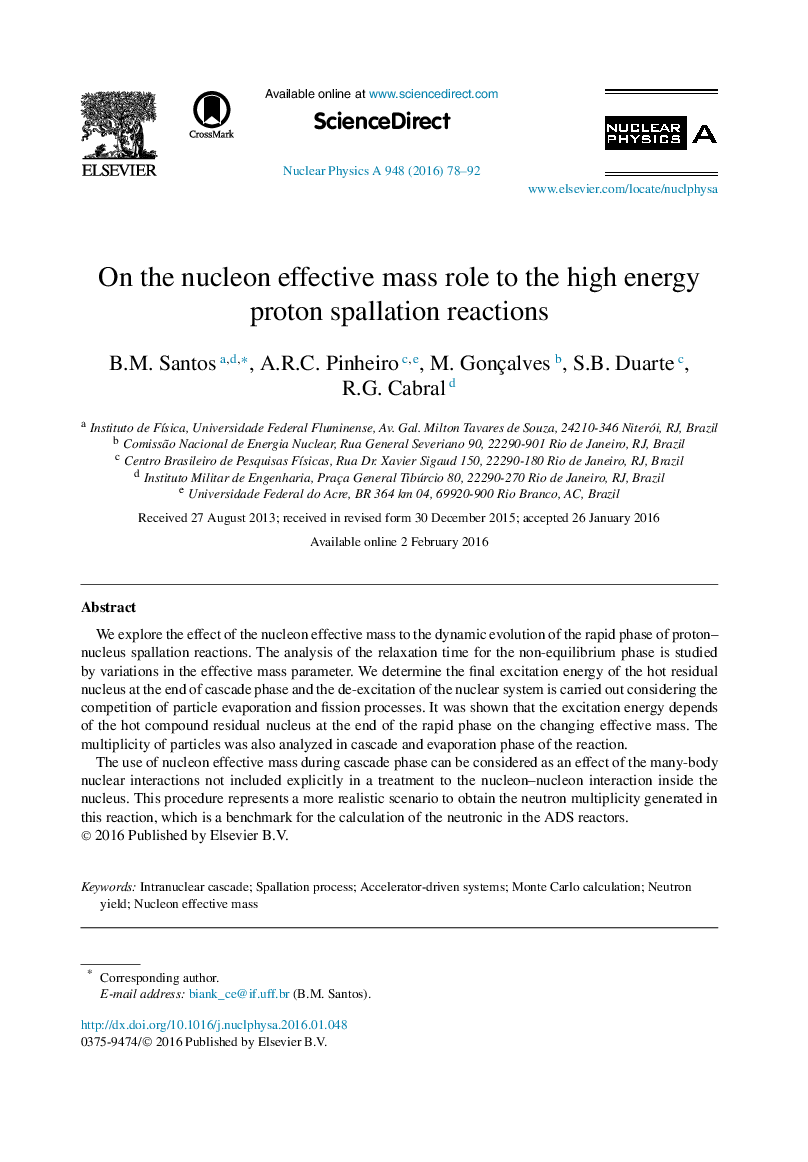| Article ID | Journal | Published Year | Pages | File Type |
|---|---|---|---|---|
| 1836766 | Nuclear Physics A | 2016 | 15 Pages |
We explore the effect of the nucleon effective mass to the dynamic evolution of the rapid phase of proton–nucleus spallation reactions. The analysis of the relaxation time for the non-equilibrium phase is studied by variations in the effective mass parameter. We determine the final excitation energy of the hot residual nucleus at the end of cascade phase and the de-excitation of the nuclear system is carried out considering the competition of particle evaporation and fission processes. It was shown that the excitation energy depends of the hot compound residual nucleus at the end of the rapid phase on the changing effective mass. The multiplicity of particles was also analyzed in cascade and evaporation phase of the reaction.The use of nucleon effective mass during cascade phase can be considered as an effect of the many-body nuclear interactions not included explicitly in a treatment to the nucleon–nucleon interaction inside the nucleus. This procedure represents a more realistic scenario to obtain the neutron multiplicity generated in this reaction, which is a benchmark for the calculation of the neutronic in the ADS reactors.
